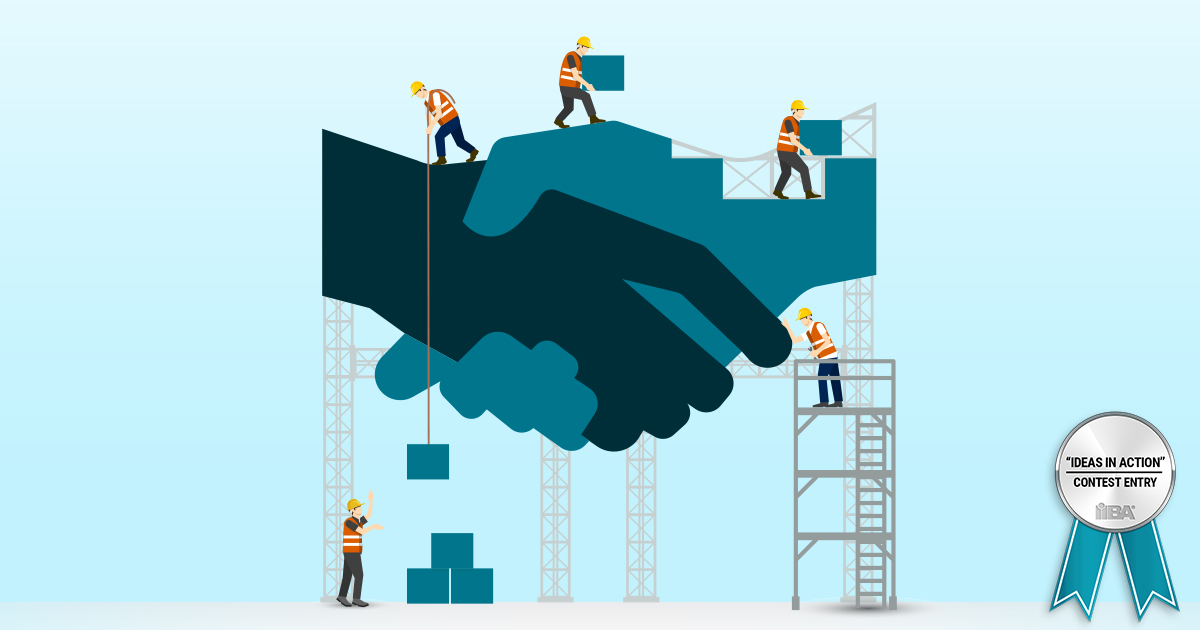No One Asked for This Startup — But Business Analysis Made It Work
Disclaimer: The views and opinions expressed in this article are those of the author and may not reflect the perspectives of IIBA.
This is the fourth entry in our “Ideas in Action” writing contest. Like what you’re reading? Vote for it in our LinkedIn poll at the end of the contest.
When the world shut down in 2020, I didn’t start baking, crocheting, or learning how to play the guitar. I watched the businesses I loved start disappearing. Owners I respected were closing shop. Friends who had just launched their businesses were slashing budgets, going silent, or burning out trying to stay alive.
So, I built something.
Rally the Locals started as a kind of wild social experiment. I’d approach small businesses, pitch them the idea of a custom feature video, interview them about their story, and post it on a platform I was building from scratch. No charge. No catch.
Most thought I was out of my mind.
But I believed in it. I believed that if we showed up, listened, and actually gave value without asking for anything in return, we could build something real. Something that mattered.
I didn’t want to treat local businesses like another number on a campaign sheet. I wanted to rally with them. And deep down, I knew that if we did this right, the organic community we built would open doors. That people would be willing to pay for services eventually. But first, they had to believe in us because we believed in them.
Business analysis gave me the tools to turn that vision into action. This is the story of how I used them in the trenches.
From Blurry Idea to Actual Impact: The Role of Business Analysis
In the beginning, Rally the Locals was more of a feeling than a product. But the business analysis mindset kicked in fast.
I wasn’t running traditional stakeholder interviews. These were Zoom calls or quick meetups in cramped corners of retail stores. Real conversations, with real people, talking about what was falling apart and what they were still holding onto.
I developed personas to anchor our approach. The overworked solopreneur. The proud restaurant owner. The burned-out maker who had tried everything.
I mapped their days, their pressure points, what excited them, and where they were showing up online. These weren’t fluffy marketing profiles. These were war maps.
Journey mapping followed. I charted the experience of a small business owner engaging with us, from first contact to interview, publication, and ongoing support. This shaped everything from our tone to our tech to how we followed up.
We weren’t guessing. We were designing.
That’s the difference business analysis brings. You don’t just build. You build with intention.
Interviews That Hit Different: Learning From Real People, Not Personas
Listening changed everything.
Over time, I interviewed more than 100 businesses. Every single one taught me something.
Three pain points kept surfacing over and over again. First, no network or exposure. These owners had great products and services, but no one knew they existed. Second, no lead opportunities or sales traction. They were grinding just to break even. Third, burnout. Deep, painful burnout. People were exhausted, not just from the work but from trying to be everything at once.
These conversations shaped the core of our platform. We didn’t want to just tell stories. We wanted to position each business to be seen, respected, and discovered.
And then we took it offline.
We hosted two local market events featuring vendors we’d previously interviewed. They were living proof that community was still possible and that when you bring value first, people show up.
Business analysis was the engine. The people were the fuel.
MVPs and the Heartbreak of Letting Go
Let’s talk about building.
When I started, I wanted to launch everything. Business portals. Product listings. Booking systems. AI-generated content that local businesses could create. I had sketches and specs and our general ideation backlog went on for days.
But then I stepped back. I revisited the journey maps and interviews. I looked at what the business owners actually needed, and more importantly, what they would use.
We stripped it all down.
We focused on simplicity, trust, and value. Interviews. Promotion. A sense of belonging.
That was our real MVP.
Sure, it stung to park the tech dreams. But those dreams would have flopped without the foundation. MVP isn’t about what’s impressive. It’s about what’s impactful.
That mindset saved us and led to business opportunities.
Stakeholder Chaos and Building in Real Time
In startup life, your “stakeholders” aren’t sitting around a table with name tags. They’re everywhere.
You’ve got the business owners sharing their lives with you. You’ve got designers and developers you’re trying to direct. You’ve got a mom who’s wondering when you’re going to sleep, even though you’re a grown man pushing 40. You’ve got a team reacting to different business needs and perspectives, sharing feedback in real time.
That’s not calm and orderly. That’s messy, beautiful, and unpredictable.
The only way through was to stay grounded.
I used empathy mapping to help keep us honest about who we were building for. I employed user stories to break down the chaos into something we could action. I leaned on retrospectives, not just for process improvement but also to check in on the team’s energy and alignment.
And I always came back to one question: Are we still moving in a way that honours the people who trusted us to tell their story?
That kept the compass straight.
Relentless Empathy Is a Blueprint
Rally the Locals didn’t thrive because of tech or branding. It thrived because of relentless empathy.
That’s not a slogan. It’s survival.
It’s what got me through the nights when it felt like none of this was working. It’s what helped me hear the cracks in someone’s voice on a call. It’s what built trust with people who were used to being pitched and discarded.
When I gave my TEDx Talk on unlocking resilience through empathy, it wasn’t theory. It was lived experience.
Empathy is the foundation of business analysis. More than just gathering requirements, you feel the gap between what people are struggling with and what they dream is possible. And then you help bridge it.
If you’re a business analysis professional, know this. You’re not just part of the system. You are the system’s conscience. You are the clarity in the noise. You are the one who makes it make sense.
You can build things that change lives.
I know because I did.
Your next breakthrough in business analysis begins here. Download The Standard today, sharpen your skills, and lead your organization (or others) toward success.
About the Author

Chris Hoquis is the founder of Rally the Locals, a grassroots marketing agency helping small businesses thrive through storytelling and digital connection. With over 20 years of experience spanning information technology, entrepreneurship, consulting, and Agile delivery, Chris also teaches at the University of Manitoba and speaks about the power of empathy in leadership and innovation.


